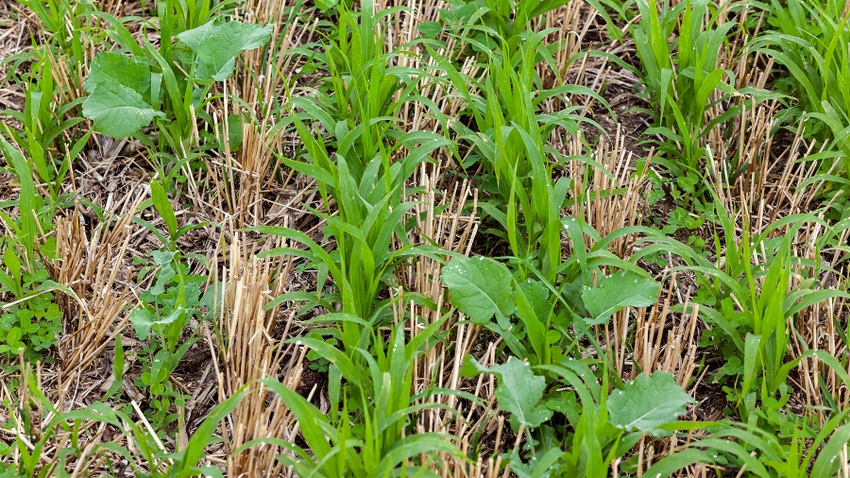
A consistent truth in agriculture is that farmers know their land better than anyone. This truth shines through when it comes to cover crops. Cover crops offer benefits to soil health and conservation, but the challenge is finding ways to make them pay for themselves on the farm. Farmer intuition is key in cover crop decision making.
Virginia Tech conservation agronomist and Extension cotton specialist Hunter Frame is a big advocate of cover crops. He has conducted extensive research on cover crops since earning his Ph.D. in crop and soil environmental science from Virginia Tech in 2012 and is considered one of the leading experts in using multi-species cover crops in cotton, corn, and other crops.
One truth Frame heralds is that cover crops must be both agronomic and practical.
“If we can’t have an economic benefit going into this, they’re not going to wait five to six to seven years to see the soil benefits moving forward,” Frame said in a cover crop panel Jan. 12 at the North Carolina Commodity Conference at the Sheraton Imperial Hotel in Durham.
Farmers are interested in adopting cover crops if they can find a way to make them work. Farmers not only know their land, but they love their land, and they want to do all they can to make their soil healthier and more productive. Cover crops must deliver real returns.
For cover crops to work they must be effectively managed. Frame says it is important to consider your goals. Are you aiming for nutrient cycling or weed control, or both? Your cover crop mixtures must be targeted to your production goals.
Legumes are valuable in nutrient cycling and providing plant available nitrogen. Species such as hairy vetch, crimson clover, and Austrian winter peas work well. For weed control, small grains such as cereal rye, triticale, oats, wheat, or barley provide mulch to limit weed emergence. Maximizing biomass is key to achieving the greatest benefits.
Cover crops do provide carbon to the soil and can increase soil carbon and organic matter to improve soil health and productivity. However, Frame emphasizes that this will take many years to achieve. He says measurable benefits will be seen in three to five years.
The best farmers are intuitive. They have an inner sense and know what works best on their farm. This intuition will be needed when it comes to the challenge of managing cover crops. Farmers will need to use their well-honed R&D skills to determine their best cover crop strategy.
The good news is farmers won’t take their cover crop journey alone. They can turn to the land grant universities and other farmers who have found success with cover crops to help guide them in their journey. But the returns must be real and measurable.
About the Author(s)
You May Also Like






